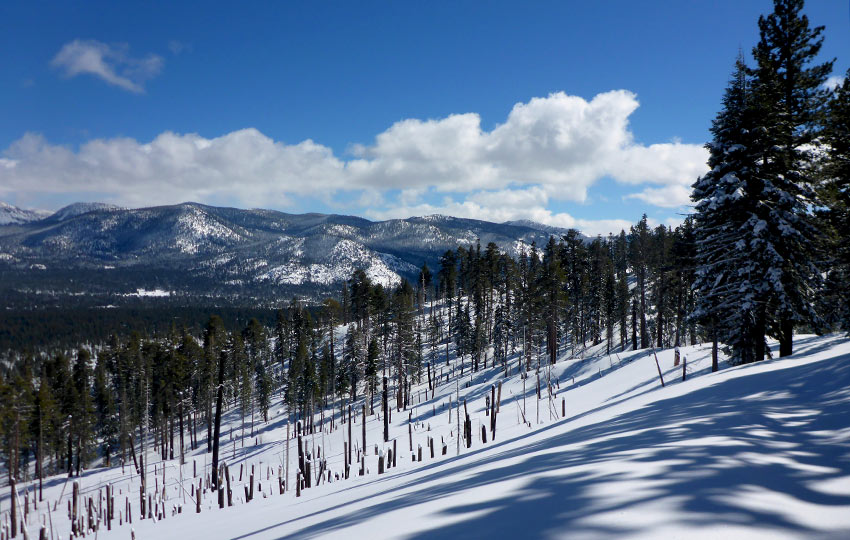
If you would’ve told me years ago that I was going to own multiple pairs of cross-country skis and sets of skis boots, I would’ve laughed. And then had you told me that I’d also own a full wax kit, wax profile, and loads of cross-country ski clothing, I would’ve laughed even harder.
Not because I wouldn’t have believed you. But because I know myself and what happens to me when I get passionate about something.
At around $250-$500, buying a new set of recreational cross-country skis and its accompanying equipment (boots, bindings, and poles) is not a major financial investment. However, your initial purchase potentially could become the beginning of a disease known in the outdoor recreation industry as gear lust.
Of course, how severely you succumb to this disease totally depends upon your level of ambition and commitment to learning the fine art of cross-country skiing.
What Exactly is Gear Lust?
I currently own about a dozen pairs of cross-country skis and just as many sets of cross-country ski boots. Believe it or not, this isn’t extreme compared to some of my fellow Nordic nerds. And, I’ve swapped out various sets of skis over the years.
For example, I once found a set of orphaned backcountry xc skis laying on the side of the road near a popular public skiing trailhead. Perhaps the owners had enough of this deceptively complex art called cross-country skiing and essentially tossed them away. Or, maybe the owners traveled to Tahoe from far away, xc skied for the day, forgot their skis when they drove off, and then determined that returning was more work that it was worth to retrieve said skis. Either way, it was obvious that the owners were never coming back for them (I even left a note at the trailhead for the owners).
Support Tahoe Trail Guide with a financial contribution via PayPal (single contribution) or Patreon (reoccurring contributions). Your support of Tahoe Trail Guide is very much appreciated!

I initially felt guilty for taking the skis. But we’ve all lost gear in the backcountry. And the best we can hope for is that it finds continued life in the hands of a new owner which, in this case, actually happened. I tried the skis out a couple of times, but they were too big (stiff camber) for me. So I gave them to a friend who’s taller and heavier than me, and he’s been running them every winter since that day.
Gear lust isn’t just about buying new stuff. The disease also causes you to compulsively acquire gear from any and every available source (such as the side of the road!).
A Tool for Every Job
I’ve previously stated that there’s a tool for every job and a job for every tool.
To an outsider, my collection of cross-country skis looks excessive. However, every set serves a relatively unique purpose.
For example, I own two sets of classic “waxless” cross-country track skis. One set is for “rock” skiing and the other is for use when there’s sufficient snow coverage on groomed trails.
My set of rock skis were actually gifts from employers. The pair of old skis were in our rental fleet for years and had finally been decommissioned. They’re on their way out at this point, however, as they don’t have much spring left in their camber. So I’ll need to downgrade another set of skis for rock skis soon.
If you don’t know, rock skis are a set of old skis that you use when the snow is spotty and you risk, literally, skiing over rocks and debris. Better to wreck the bases of those old skis than your new (or only) pair of skis.
I also have a set of rock skis for backcountry excursions early and late in the season (when coverage is thin). Those, too, were gifted to me by an employer. They had been sitting in our lost-and-found bin for years before I acquired them.
Additionally, I own about seven other pair of backcountry cross-country skis for use when there’s quality snow. Those sets of backcountry cross-country skis are 62mm, 68mm (waxable), 88mm, 98mm, 99mm (waxable), and two sets of 112mm wide. They allow me to ski effectively at various depths and qualities of snow.
I also own a set of really nice waxable classic xc skis. At one point, I owned a different set of waxable classics that I, again, inherited from work. Yet another set of skis long-abandoned in our lost-and-found bin! However, that free pair had an old set of bindings that I just didn’t want to deal with. Basically, they had a really stiff bumper and I couldn’t find a softer replacement. So I donated those up to a ski swap.
At the tail-end of the 2019/20 season I actually bought myself a pair of skate skis. Until then, I had just been using skate skis from the rental fleet at my job. Then I purchased another set of similar skate skis that had been part of my work’s demo fleet in 2021.
Yikes.
Gear Lust is Fueled by Passion
I always advocate for buying quality gear. When it comes to outdoor-related gear, you usually get what you pay for. So, I’ll be the first to admit that working in the outdoor recreation industry has only fueled my gear lust.
So many skis…
But as I further my education and exploration into cross-country skiing, I see there are still so many more that I want to buy! I probably won’t, however, but I can always dream 🙂
This doesn’t mean that you, too, will wind up buying multiple pairs of skis. But as you develop your cross-country skiing skills and technique, you’ll come to realize that you can’t fix everything with a hammer.
How Committed Are You to Cross-Country Skiing?
Questions you need to ask yourself regarding your intentions for cross-country skiing are…
- How often will you xc ski?
- Where will you primarily xc ski?
- Are you athletic?
- Will you be taking xc ski lessons?
- Will you ever race in an cross-country ski event, even just for fun?
- Are you an ambitious and passionate person who tends to commit to anything and everything you do?
Invest in Relatively Inexpensive Gear at First
Despite my personal experience, I agree that you don’t need multiple sets of skis.
If you only plan to ski a couple of times each season, you can manage with one pair of all-around cross-country skis.
Even if they take a beating from skiing across less-than-ideal terrain, you’ll be fine with owning one pair. But initially go with something relatively inexpensive.
It’s not worth investing lots of money into gear that’s going to spend the majority of its time stored in your closet or garage. Besides, you don’t want to ruin that expensive pair of xc skis running them over thin coverage.
I can’t stress enough that if you do decide to buy just one pair of skis and only plan to ski occasionally with them, don’t purchase the latest and greatest setup.
Invest in Technique more than Gear
Better skis don’t mean you’ll have better technique. In fact, a set of high-quality skis will most often illustrate just how unskilled you are. It’s like a new driver operating a high-performance sports car. The skill set to properly handle the machine requires a lot of practice and experience.
Although it doesn’t happen too often, it’s always shocking to see the aftermath when a customer who has seldom cross-country skied falls simply trying to negotiate a small hill.
The broken ski(s) often looks like it completely exploded. You don’t want this to happen to your one pair of $850 skis that you’ve grown to covet.
So, wait to buy higher quality skis for when you become more proficient at skiing.
Another example of the reality of xc skiing early (and late) in the season…
At the beginning of the 2017/2018 winter season an expert skier came into the rental shop where I worked to rent a pair of skis. He had just snapped one of his skis in half while trying to negotiate debris-filled terrain.
I felt bad because me and another employee had recommended just prior to the incident that he take the resort’s free shuttle (providing quick access to better snow).
It was the beginning of the season, after all, and some of the trails had very thin coverage. Hence, our shuttle service.
You would do well to purchase an entry-level to mid-level recreational cross-country ski package. Search for ski packages at local ski shops and online. And then figure out how you can take some lessons to help you develop your cross-country skiing technique. Again, I believe investing in technique is way more important than the gear that you run.
Once you gain a baseline level of proficiency you can upgrade to a better quality ski.
Then, you’ll have that original pair of xc skis for your rock skis!
Necessary Personal Information for Buying XC Skis
Provide the necessary and accurate information about your weight (and to a lesser degree, your height) to ensure you buy the appropriately sized set of skis.
You’ll only be setting yourself up for failure if you don’t disclose your true weight.
I’m not talking about the weight you hope to achieve after a season of consistently skiing. Cross-country skis are designed to accommodate specific ranges of body weight, so be honest.
Also factor in the average weight of the clothes and gear you’d normally be wearing while xc skiing.
If you weigh too much for a ski, it’ll drag and slow you down. This may sound like a good thing to a beginner. However, it just ends up being frustrating because you can’t get any glide with them.
Glide, by the way, is a huge part of the enjoyment of cross-country skiing!
Buying skis designed for a person heavier than you makes it nearly impossible to get anywhere. Your body weight (and how you focus it on the ski) is what causes the ski to compress and allow the kick zone/scale pattern to make contact with the snow.
Without being able to fully flatten your ski, you’ll just slip and slide and never be able to push off.
Beware … this is the Beginning of Gear Lust
If you’re planning to dig deeper into the art, consider acquiring at least two sets of skis early on.
Pick up two of the same styles of skis (i.e. classic waxless skis for groomed trails), with one set for rock skiing and another set for good snow conditions.
Or if you have access to groomed cross-country ski trails and ungroomed terrain (i.e. off-trail/backcountry), buy a set for the groomers and then one for use in the backcountry.
Let this process be organic. Get that first setup to accommodate the majority of what you plan to ski. Then, start to build from there.
For People Who Consider Themselves Intermediate Skiers
If you’ve already rented skis multiple times, have taken lessons, and have decided that you’re going to commit to cross-country skiing, go ahead and purchase a setup that’s at the top end of a recreational ski or at the low end of a racing ski.
This will ensure that you have adequate gear to grow into. To help you determine the types of cross-country skis that are available, the popular manufacturers (Fischer, Salomon, Rossignol, Atomic, and Madshus) categorize their skis based on intended use.
This is no different than an auto manufacturer or a maker of kitchen appliances. It’s in the company’s best interest to offer a range of products to attract as many customers as possible.
If you find yourself in this situation, you’ll be happier with something more expensive because you’ll have good performance throughout your experience. And, you won’t find it so jarring to transition into something performance-oriented.
Low-end skis simply don’t perform as well as their high-end counterparts. And, you’ll notice this as you become a better skier.
But, again, you risk ruining those nicer skis if they’re your only pair and snow conditions are not ideal.
If you’re already racing, participate in club training sessions, and own multiple sets of cross-country skis that accommodate every snow condition and environment, well… you probably know way more than me about cross-country skiing.
I recommend looking elsewhere to help you in your search for another pair of skis. Sorry, but this blog is was written with the beginner cross-country skier in mind.
Take Cross-Country Ski Lessons. Period.
Cross-country skiing, whether you’re classic skiing or skate skiing, is deceptively complex. It looks simple, but it’s not easy.
Regardless of your commitment to cross-country skiing, take a lesson (even if it’s just a group lesson).
The three core principles of all cross-country skiing, as taught by the Professional Ski Instructors of America (PSIA), are:
- Push-Off
- Weight Transfer
- Glide
These three fundamental aspects of cross-country skiing don’t come naturally or intuitively. That is, until you practice them often and understand the design and function of cross-country skis.
Again, simple but not easy.
Therefore, if you want to have more fun and a better (and safer) experience while cross-country skiing take a lesson, or twenty. You’ll be glad you did.
Also be aware that the more you learn the more you’re going to want to spend on gear!
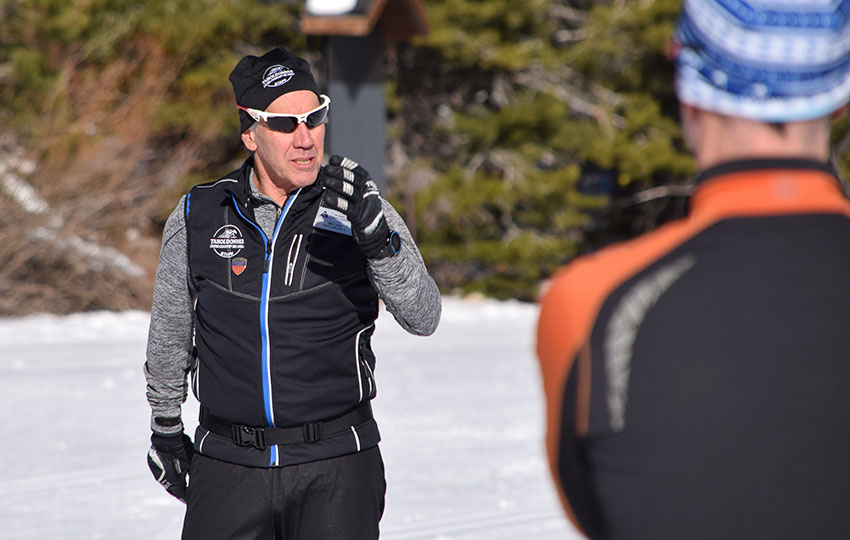
Benefits of Cross-Country Skiing
There seems to be a belief that cross-county skiing is fading into the past, and that alpine skiing will ultimately render the art obsolete. However, from my experience working in the industry at Lake Tahoe, this isn’t an accurate perspective.
Nor is this evident in our era of Covid, where people have been embraced activities where social distancing is inherently a part of them.
And, believe it or not, many people were beginning to transition out of alpine skiing and into cross-country skiing way before Covid.
Why?
Because cross-country skiing is…
- way more aerobic, enabling a person to stay in shape during the winter.
- less punishing on the body, allowing a person to enjoy a longer and relatively pain-free season.
- less expensive.
- and, there are no lift lines in which to wait.
Although injuries do happen in cross-country skiing, I see far fewer (particularly the catastrophic ones) than with gravity-based winter sports. Just ask any ski patroller at a groomed cross-country ski resort how many serious injuries they treat on any given day. It’s less than the fingers on one of their hands, if even that many.
All around Lake Tahoe there is a thriving cross-country skiing community. Check out some of the larger clubs and resorts for more information:
- Far West Nordic
- Auburn Ski Club
- Tahoe Donner Cross Country
- Sugar Bowl Academy
- Royal Gorge
- Tahoe XC
- Northstar
- Nevada Nordic
- Kirkwood
Cross-Country Skiing Explained Articles and Videos
Please note that I wrote and produced the Cross-Country Skiing Explained series of articles and videos with the beginner and intermediate cross-country skier in mind. This is the demographic for whom I most often serve(d) while working in the outdoor recreation industry at Lake Tahoe. I basically treat these articles and videos as extensions of the conversations that I have (had) with those customers.
That said, expert skiers probably could take away something of value from these resources. Just know that I don’t address race-oriented philosophy, technique, or gear selection.
Considerations for buying cross-country ski gear (new and beginner xc skiers)
- Intention, Types of XC Skis, and Whether to Buy New or Used (Part 1)
- How Much Gear to Acquire, Evaluate Your Commitment, Value of Taking XC Ski Lessons (Part 2)
- Can One Set of Classic Cross-Country Skis Work for Groomed and Off-Track XC Skiing? (Part 3)
- Can I Use One Set of XC Ski Boots for All of My Cross-Country Skiing Needs? (Part 4)
- Overview of Off-Track and Backcountry Cross-Country Ski Gear
- Invest in Technique More than Gear
Classic Cross-Country Ski Components
- Introduction to Classic Cross-Country Skis (Part 1)
- Geometry of Classic Cross-Country Skis (Part 2)
- The Grip Zone of Classic Cross-Country Skis (Part 3)
- Types of Bindings for Classic Cross-Country Skiing (Part 4)
- Ski Boots for Classic Cross-Country Skiing (Part 5)
- Classic Cross-Country Ski Poles (Part 6)
- FAQs about Classic Cross-Country Skiing
Waxing Your “Waxless” Cross-Country Skis (for beginner and intermediate xc skiers)
- Introduction to Waxing Your Waxless XC Skis
- Step-by-Step Waxing Tutorial
- FAQs About Waxing Your Waxless XC Skis
Cross-Country Skiing Techniques, Demonstrations, and Related Concepts
- Outdoor VLOG (emphasis on the cross-country skiing experience)
- Cross-Country Skiing in Challenging Conditions
- Considerations for Winter Adventure in Lake Tahoe’s Backcountry
- Using the Side-Step and Herringbone Techniques in the Backcountry
- 10 Tips for Spring Cross-Country Skiing in the Backcountry
- 5 Reasons to Love Spring Cross-Country Skiing
- Considerations for Cross-Country Skiing During the Fall and Early Winter
- Discussing the Goal of Becoming a Better Cross-Country Skier and Embracing Backcountry and Groomed Terrain in Pursuit of that Goal
- The Cross-Country Skiing Experience: Immersing Yourself in Winter
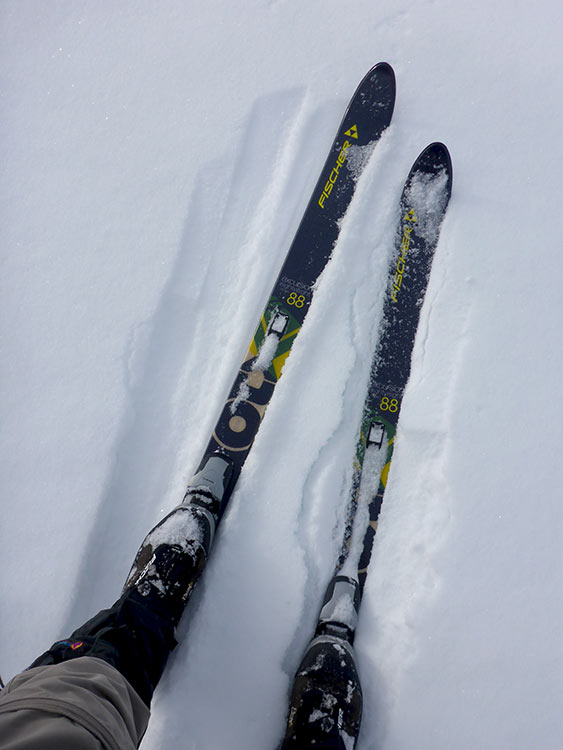
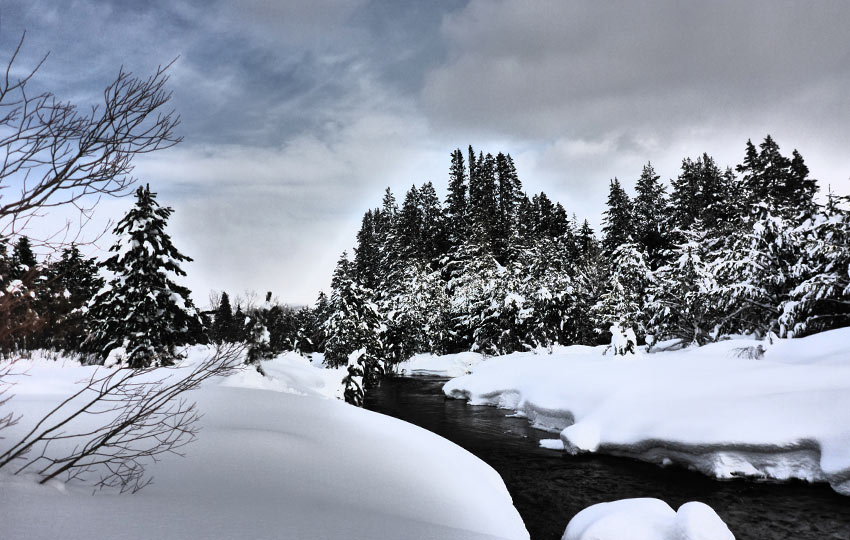
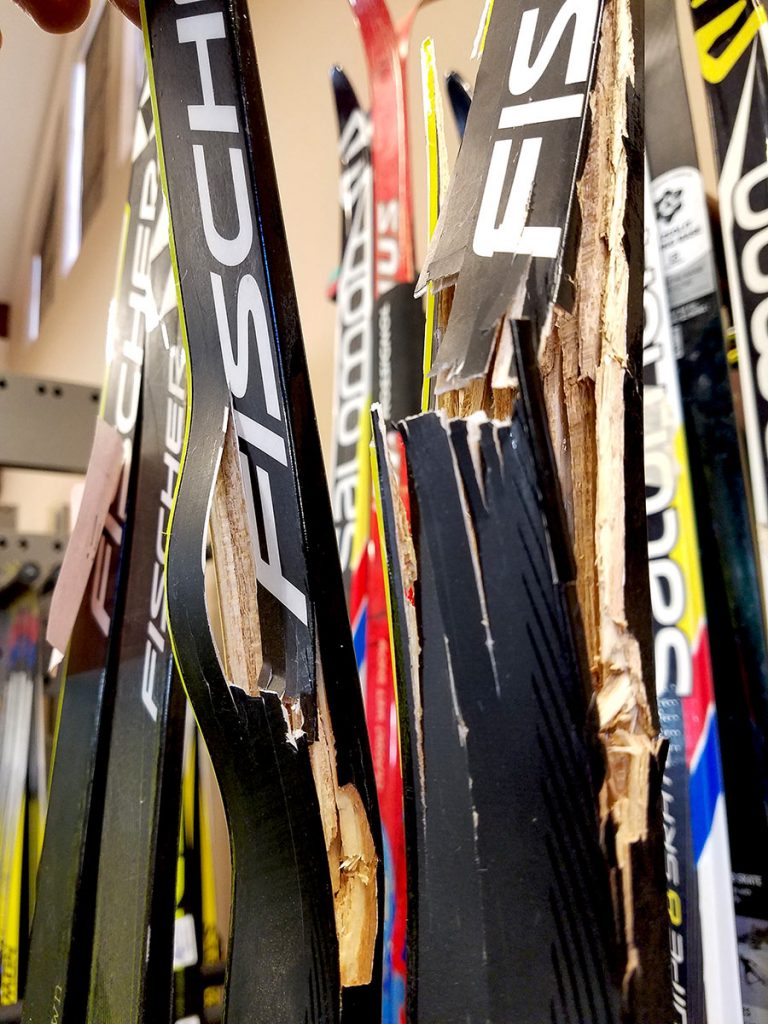
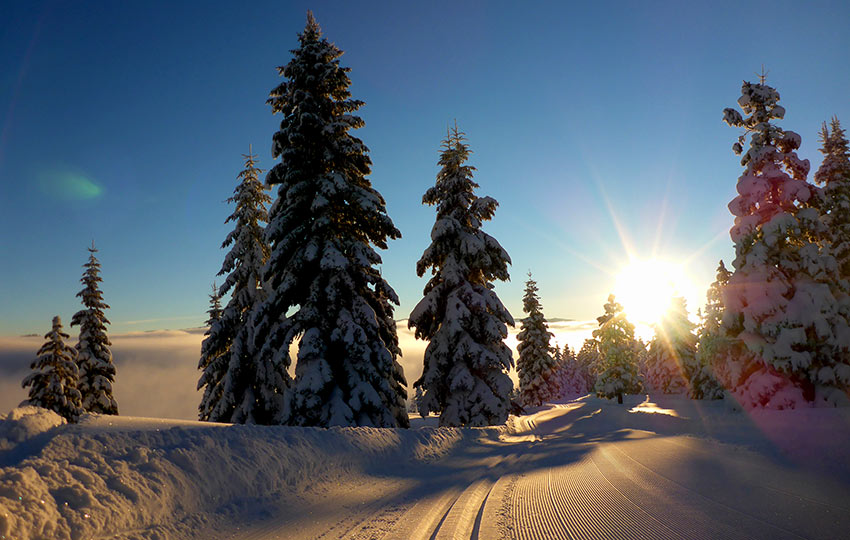
Hi Jared, love your site and information, especially on back country xc. I’m looking to get an all-round width of ski to start out with in the backcountry of Niseko, Japan – which gets a ton of powder (45ft a season), it can however snow nearly a 6″-12″ almost every day – but I’ve noticed the powder often melts and compresses and of course there’s the early and late seasons… Any suggestion on a do it all ski width for a backcountry xc in these conditions? Horses for courses I know, but if you had to choose one, would 100 or 120 be best for the first pair to begin exploring with in these conditions? Separately, I may need to mount my own bindings as there’s virtually no xc service in Hokkaido that I’m aware of… Seems the wider skis all need bindings installed (by a shop) – I’ll need to buy my set up online as (for now) I mostly live in a subtropical city! I’m good with tools and wood working equipment. Any advice?
Hey Michael!
Thanks so much for the kind words, and for reaching out!
You have a challenging situation in which to accommodate. Last winter (2022/23) Tahoe was hammered with foot after foot of snow and my Fischer S-Bound 112mm skis were still to narrow. So my first thought was the 120mm skis for your situation. But that wide of a ski is not versatile and, in fact, very frustrating to run on consolidated/hard-packed snow. So even though you may get a lot of deep stuff, if it consolidates quickly (and for early/late season) you may want to get the 100mm. In general, a 98-100mm wide (tip) ski has been considered a great all-mountain/all-around ski. It’s still a bit wide for hard-packed snow, but more manageable than something wider. And it should provide a fair amount of float in deep stuff. Although, if you’re dealing with more than a foot of powder there’s no really great backcountry xc ski that’ll handle it. Like I said, even my 112s were outmatched all of last winter. But I still had fun with them.
As far as mounting bindings go, you’ll have to drill them on as all backcountry xc skis are designed like that (i.e. with screws in mind rather than quick mounting plates w/slide-on bindings for track/skate skis). And that’s a whole other animal. That is, mounting bindings from scratch and without a professional jig. Here’s a YouTube video of me mounting a set of NNN BC bindings (https://youtu.be/c5Zl3XY6hOY?si=J94_Xl6WXPW642Qi ) for your reference to show you what you’d be dealing with (in spite of it being a slightly different binding). Ultimately, the steps are pretty similar.
I don’t want to get into the nitty gritty details here of mounting bindings because I generally discourage people from doing it themselves (assuming they have a shop nearby), but once you decide on what you’re going to do get back in touch with me and then I might be able to provide some assistance when it comes time to mount the bindings. I just don’t want to list out the detailed process right now only to find out that you found a person who could do it for you, for example. Drilling holes into xc skis is a commitment and not something I want to casually write a list of steps at this point.
I know that most of what I offer here isn’t too helpful, but mounting your own bindings without having a professional jig or a lot of experience can be challenging. Not trying to discourage you. I’m just trying to be realistic.
Anyway, keep in touch and let me know what you ultimately decide on. And then we’ll go from there. Again, thanks for the nice feedback and for getting in touch with me 🙂
I am 5 feet tall and 125 lbs size 7 shoe. What length of skiis are proper for a short person? I only classic ski on groomed trails. I do have a set of skiis that I have inconsistently used for the past 25 years,but the skiis seem too long. I think its because of my age (61) as I seem to be a lot more unbalanced now days.
Hey Kari,
Thanks for the question!
Essentially xc skis nowadays are selected based on weight. My recommendation is to find the ski you want (based on your needs) and then do a search for that ski’s weight range which will provide the proper length for you. That weight range is specific to the grip zone, so be sure to be accurate about the weight. Each ski/length is pretty unique, and some feature broader weight ranges than others. If you can find a length where your weight is right, that’s great.
Anyway, that’s where I’d start. Let me know if you have other questions!
Thank you Jared. I love your site.
Thank you, Kari! I totally appreciate the kind words 🙂
Hi Jared,
Thanks for the helpful YouTube videos! I was up at grass lake last week to splitboard Waterhouse Peak. My wife wants to start cross country skiing. Can you recommend any ski shops either in the Carson Valley or SLT that are patient and helpful with setting up newbies with the correct gear?
Thanks,
Keith
Hey Keith,
Thanks so much for the kind words, and for watching my YouTube videos 🙂
That’s cool that your wife is interested in xc skiing! Not sure when or if it would ever be a possibility, but I have been building somewhat of a network of friends who cross-country ski. At least last season we’d occasionally xc ski together. But, with Covid precautions, I’ve mostly been skiing by myself.
Anyway, the only shop in South Tahoe that I’m aware of that offers a wide selection of cross-country skis is Sports LTD (at Stateline, NV). I haven’t shopped there in years, but some good friends of mine bought their first set of xc skis from them about two weeks ago. They said they had a good experience. I believe Alpenglow Sports (in Tahoe City) also sells a good selection of xc ski gear. I’m not familiar with anyone down in Carson City, however. And, there’s always the Reno REI. At this point in the season, though, I would definitely call ahead to make sure any of those company’s (if you decided to buy from them) have inventory on-hand. It’s been a whole thing in the outdoor rec industry (beginning in the summertime, by some reports) that ski inventory has been running low. I think retailers and manufacturers just didn’t anticipate the higher demand in backcountry-oriented gear.
Good luck, and let me know if you have any other questions!
We bought a set each today. Thanks for the feedback!
Yea, please add me to your network. I always prefer to push my limits a little more when I’m not solo. The coverage was so thin on Waterhouse last week, I about broke my ankle hitting a log, lol. My work schedule is a little funky right now but should stabilize in a few weeks.
Where was that y’all were skiing today? Looked awesome.
Keith
Hey Keith,
That’s great that you both bought a setup! One of my good friends and his wife are in a similar situation in that he alpine skis a lot while she mostly cross-country skis. But then, they both xc ski together pretty frequently, too.
Yeah, it’s still pretty thin and unstable out there right now, so be careful! I’ve ground over more than one rock/boulder recently.
That location in which I was xc skiing on 12/21 was at Grass Lake/Luther Pass, but it’s around the corner on that north aspect of the small mountain range in the direction of the Big Meadow Trailhead. When I just want to practice some downhill stuff, I’ll just head over in that direction and look for a favorable angle on which to practice. I xc ski at Grass Lake so often (when I’m short on time or too lazy to drive anywhere else) that I have to mix it up sometimes 🙂
My work schedule will be a bit unpredictable, too, going into the holiday season (with Covid protocols). So, I’m not really planning anything too far in advance. But after the new year, hopefully the snow will be good and we’ll all be in some sort of predictable routine.
Anyway, if you wouldn’t mind sending a brief message through the contact feature (sidebar) with your name and number, that would be easier for me to remember. I don’t have an actual list going right now, but I think it might be a good idea considering how many people I know now who are interested in xc skiing with other people.
Oh, I actually deleted your phone number from your last reply as a safety precaution. I don’t like having emails, phone numbers, or addresses in the comment section just in case bots are out there harvesting that kind of info.
Need a package for decades skilled alpine skiers but low intermediate nordic skiers. Couple in mid 50’s needs all s/b/p for christmas. Any ideas on where to buy? In Seattle but could buy online. Thanks. Oh, track and classic only. No-backcountry.
Hey Kenneth,
At this point in the season, I’d recommend buying from anywhere you can. I’ve read a number of articles about ski shops already running out of surplus as everyone is trying to secure gear for the winter (in preparation of ski resorts closing due to Covid). I’m not familiar with xc ski shops in Seattle, but Gear West (based out of Minnesota) has an exceptional selection of track/classic skis and a major online presence. I believe they sell package deals. I’ve personally shopped at their store, and it’s a top notch operation. And, I believe they focus more on groomed xc skiing skis (classic and skate) over off-track/backcountry xc skis.
http://gearwest.com/
If Gear West doesn’t have what you’re looking for, I unfortunately don’t have another option in which to recommend because stores specializing in nordic gear are few and far between in the US.
Anyway, not sure how helpful that is, but let me know what you come up with!
Hi Jared,
I came across these skis recently (I don’t own a pair, just saw in internet).
http://www.adk.org/gear-review-altai-hok-skis/
They are priced about the same as the set of XC backcountry skis, however there is an option that does not require a dedicated boot, just stiff enough hiking/mountaneering boots. Ta first I totally dismissed the idea as I couldn’t imagine skiing even on 145 cm long skis. However, the more I think of it the more interesting the idea gets. Do you have any experience with these? Thanks.
Hey Dmitry,
I’ve never actually used them, but we do have two sets of them at the xc ski center I work at during the winter. That said, all of the feedback from my co-workers who’ve used them basically say the same thing — they’re more fun than snowshoes, but far less enjoyable than cross-country skis. It’s nice that they don’t require a dedicated boot (just something more stiff, like you said), but there’s no camber to them which means you’re not going to be doing any diagonal striding. It also means that the skins essentially drag on the downhills. Again, you can totally get some glide going downhill with these things compared to snowshoes (with their crampons), but I believe the flat and uphill travel is more akin to using skins on an AT/Randonee setup or a pair of Telemark skis.
I don’t like talking bad about products made by small businesses creating innovative designs, but give me a pair of regular cross-country skis any day over these hybrids. At the same time, I’d choose the hybrids over snowshoes so that I could cruise a little faster.
Long story getting longer … I think they’re a great alternative to snowshoes, but not for cross-country skis (especially for people who actually know xc ski technique).
Hope that helps!